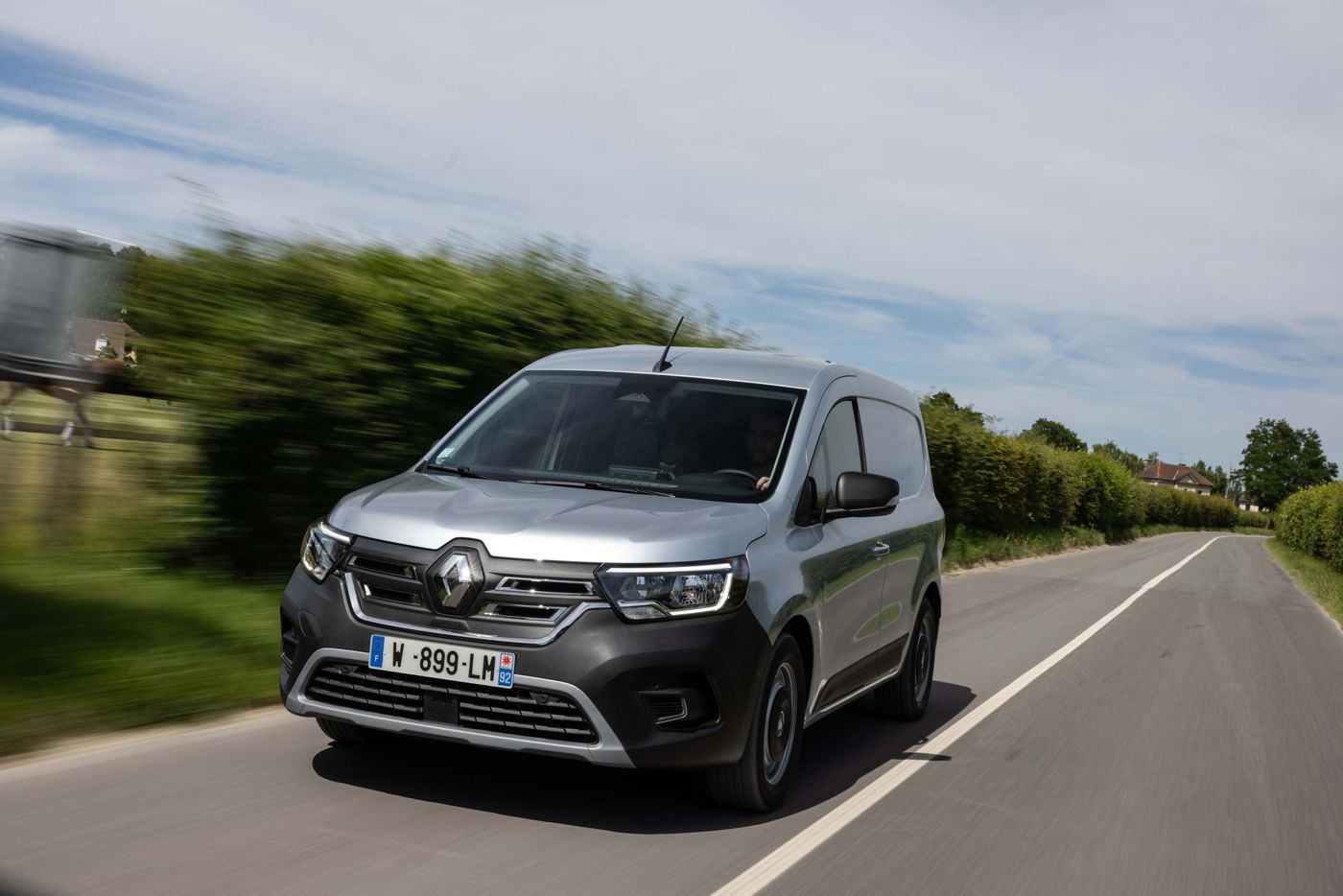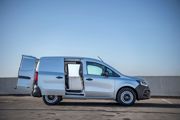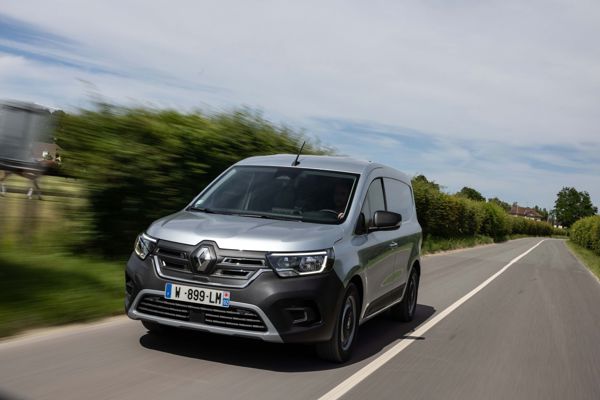Review
Small vans seem to be getting much larger as fleet buyers demand more loadspace, larger payloads and zero-emission powertrain options.
The new Renault Kangoo has been developed to fit the bill. It can carry more stuff than its predecessor and comes with a choice of petrol, diesel or electric propulsion.
It marks a significant step up for the brand’s compact commercial, which now offers a loadspace of 3.3 – 4.2 cubic metres and a payload ranging from 608 – 987Kg.
There’s also been substantial changes to the Kangoo’s underpinnings, which make it more refined, more efficient, and safer than before.
It uses bits from the Renault Kadjar and Nissan Qashqai, leading to a car-like driving experience with light controls, precise steering and a comfortable ride.
The improvements in driveability go hand in hand with greater practicality. The Kangoo Medium Wheelbase measures almost 4.5 metres in length and offers 3.3 cubic metres of loadspace. This combines with a maximum payload of 850Kg.
The Kangoo Long Wheelbase is 4.9 metres long and provides 4.2 cubic metres of loadspace. It has a larger payload, too, of up to 987Kg. Both models can tow up to 1,500Kg.
Sliding doors are fitted to both sides as standard, along with rear barn doors and a full bulkhead. The Kangoo can also be specified as a Crew Van.
The Kangoo’s interior blends robustness with comfort well. There’s plastic floor coverings and sturdy trim pieces but also car derived switchgear, air conditioning and comfortable seats.
Space is plentiful, with a large overhead storage compartment as well as deep door pockets and dashboard cubbyholes. Two and three seat configurations are possible, although the latter is only really suitable for a child.
The entry-level van comes with a basic Bluetooth radio but can be upgraded to Renault’s touchscreen infotainment system with an eight-inch display and smartphone integration for £450 (ex VAT).
On board refinement is impressive, with the Kangoo well suited to longer motorway trips. Wind and road noise is minimal, while the van’s stability at higher speeds , even unladen, inspires confidence.
Around town the steering and pedals are light, enabling for simple manoeuvrability. Driver satisfaction should be high, as a result.
The powertrain line-up consists of a 1.3-litre TCe turbocharged petrol with 100PS and a 1.5-litre DCi diesel with 95PS, both paired with a six-speed manual gearbox. There’s also a 115PS diesel with an automatic transmission and the electric Kangoo E-Tech.
We found the petrol to be responsive and eager to rev, managing around 40mpg. The diesel was our preferred engine, easily surpassing 50mpg and providing ample power with great refinement.
The Kangoo E-Tech is more capable than its predecessor, offering 120PS and a range of up to 187 miles from its 44kWh battery. It supports AC charging at 22kW and DC charging at 80kW, giving a 20%-80% charging in as little as 40 minutes.
It provides the same loadspace as the petrol and diesel models, but its payload is reduced to 608Kg for the Medium Wheelbase and 764Kg for the Long Wheelbase.
Pricing starts from £19,233 for the TCe 100 and running costs are competitive over a five-year, 100,000-mile cycle. The E-Tech is priced from £31,183 and offers more range than its closest competitors while achieving the same 28p per mile running cost.
The new Kangoo is an excellent entrant into the small van segment. It could well be the new class leader, thanks to its low running costs, great practicality and driveability.














 Diesel
Diesel
 Petrol
Petrol












